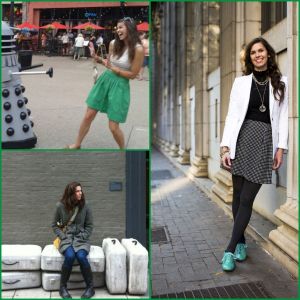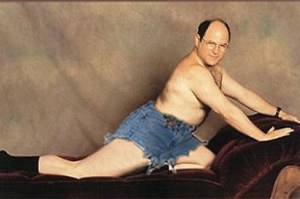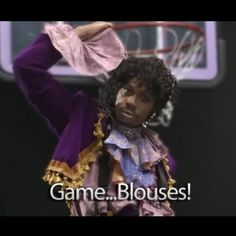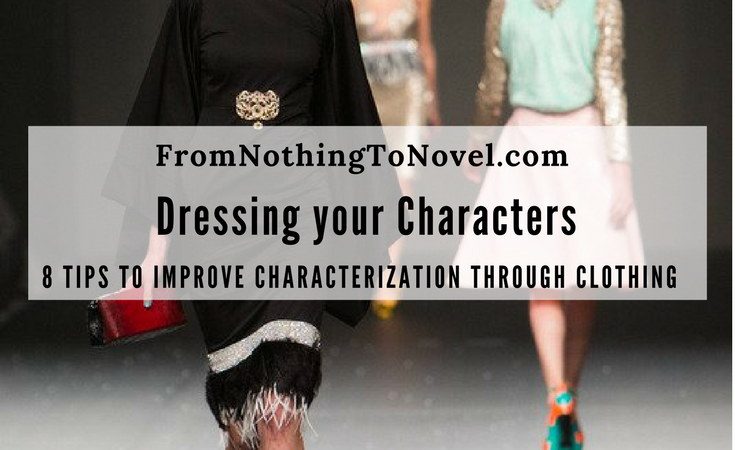
I love writing, and I love clothes, too.
This hasn’t always been true. It wasn’t until I was in my early twenties that I began watching What Not to Wear and thinking about my own fashion personality. It took a lot of shopping and experimenting and probably wasting of money before I found a look I feel comfortable and confident in. And my look is always changing. But no matter how it changes, I’m always searching for clothes that fit my personality, my life, and that make me feel kick ass.

I know what you’re thinking: This isn’t a fashion blog! I’m here for the writing!
Don’t worry; it’s all connected. I swear.
Because I’ve been so conscious of clothes in the last decade, I often notice how authors describe clothes in the books I’m reading. And, often, it’s not good.
I thought about including some quotations from some recent books I’ve read that have most noticeably offended my fashion sensibilities, but I’m not in the business of calling out hard-working authors for struggling with something that’s damned difficult. I’ll simply say that whenever I read the words jorts, pleated khakis, or “blouse,” I eye roll HARD.

BUT your fashion descriptions don’t have to cause your readers to cringe or suffer ocular damage from all the eye rolling. When used correctly, even jorts, pleated khakis, and blouse can work in your novel.

Fashion in books is all about who wears what, when, and why!
Below are 3 questions to consider when dressing your characters, 4 strategies for you to try now that will improve your characters’ wardrobes, and one GOLDEN RULE. You’ll find that when you improve your descriptions of your characters’ clothing, you’ll actually improve your characters, too!
Character-Driven Clothing
When you describe clothing, you are actually describing character. What a character wears reveals a lot about them, so be careful and thoughtful about the clothes you describe. Before building your characters’ wardrobe, consider these three questions.
- What sort of clothes are associated with their economic, regional, and cultural situation? Julie lives in Miami and I live in Knoxville, Tennessee. When it’s winter and we’re on a video call, I’ll be covered from neck to wrist to toes in layers and layers of clothing to protect myself from the still-chilly air. Meanwhile, I’m looking jealously at Julie who, if she’s not wearing a tank top, may at the most have on a light long-sleeved t-shirt cuz it’s “slightly chilly today.” Our different regions call for different types of clothing. Similarly, economic and regional situations will control how your characters dress. A low-income girl from New York City is going to dress differently than a high-income girl from New York City, and both will dress differently than someone from the South or the West coast.
- Are these clothes popular, trendy, or easily available during the time period?

Distinctive Regency Era silhouettes. Image Credit: Victoriana.com Yes, time period is very important. If you write a book set in the eighties, pleats, shoulder pads, and big hair are going to feature heavily in the descriptions. Not so much if your characters live and dress in 2017. Do some fashion research to figure this out. For example, I own a book on Regency era clothing to help me navigate the sartorial waters of my historical romance novel. The Regency period has some of the most iconic dress silhouettes, and this book tells me in what years of the Regency waist lines were lower or higher, and sleeves and skirts were fuller or sleeker. Making sure my characters are dressed for the times they live allows my readers to sink into a believable world.
- What sort of clothing would my character wear? This question extends into others. What is my character’s personality? Does s/he like clothes or know anything about them? People use clothing to explore and express their own personalities and writers can use clothing to do the same for their characters! Does your character love the past? Make her wear only vintage styles. Is your character controlling and organized–let that show in how he dresses!
Dress for Success!
Finally, here are some practical strategies for dressing your characters if you have no interest in fashion whatsoever, but still need to describe what they’re wearing. You don’t have to be a fashionista to get your characters’ clothes right!
- Use Pinterest to curate a collection of stylish clothes for your stylish

A curated Pinterest collection helps you get a visual of what you character looks like in her/his duds. characters. Having a wall of pins is a great way to visualize and then describe exactly what your character is wearing.
- Research clothing trends in different time periods and places. You can find academic texts on fashion, of course, but get more hands on than that. Find old magazines published in the time period you are writing about to get a good visual sense of what people were wearing. Ask people who may have lived during that time period what they wore. Look at old family photos. Have fun delving into the history of everyday fashion!
- Go window shopping in person or online. This technique only works if you’re writing a book set in the here and now. What stores would your characters shop in? What sort of clothes do those stores offer? Use the current collections in these stores to help you build your characters’ wardrobes. If you like to shop in person, observe the folks inside the stores. How are they dressed? Use their looks as inspiration.
- Experiment with your own clothing. Trying new styles outside of your comfort zone can make you look at clothing in a whole new way. When you step into a shirt that you would never usually wear, it can feel like you become someone entirely new. Doing this every once in a while can help you get into the heads of your own characters, feel what they feel when they wear that particular hat or their favorite crazy colorful socks.
THE GOLDEN RULE
Finally, but perhaps most importantly, don’t describe clothing at all! Why do you need to describe the entire look of any given character? What they say and do is much more important, so unless a dress, pair of shoes, or accessory actually enriches the text–helps build the world, clarify a character, or adds a plot point–maybe don’t describe it at all! Doing so may actually date your work and make it less accessible to readers ten, five, even two years from now.
Fashion moves fast, so don’t let it chain your work to the past.
How do you guys deal with dressing your characters? Let us know in the comments!

[…] you when you’re trying to concentrate. Second, I mean comfortable on the level of style. As I’ve discussed before, clothes are important expressions of your personality. Wear something that makes you feel like […]
LikeLike
I love the detail when thought about what it takes to consider what a character is wearing, how to describe it, what makes sense and doesn’t. Thanks for sharing this creative and well though out post!
LikeLiked by 1 person
Thank you! Yes, the clothing details have to be JUST right.
LikeLike
I never would have thought about making the personality match the clothes. This is really great insight into writing a story. I love this idea!!! 🙂
LikeLiked by 1 person
Thanks! So much thought goes into each and every decision…it can be exhausting!
LikeLike
I don’t think I ever realized, until now, how much importance is usually put on a characters clothing.
LikeLiked by 1 person
The clothing makes the character!
LikeLike
Such an interesting post, if I was writing a novel it would be hard for me not to describe the style I think.
LikeLiked by 1 person
I find myself lingering over clothing descriptions when I write, for sure!
LikeLike
I absolutely love this! When I’m reading, I can get so pulled out of a story if there’s a weird fashion choice, haha! I hope lots of authors take your excellent advice 🙂
LikeLiked by 1 person
Thanks! I get pulled out of the story by sketchy clothing choices, too. Glad to hear I’m not the only one!
LikeLike
I always wondered how authors came up with the personal style of the characters they write. This is like a peek into the mind of a writer.
LikeLiked by 1 person
Thanks!
LikeLike
Thanks for sharing! I like how you mentioned about observing different people in the stores in order to get an inspiration for the own style. My sister is a fan of shopping, so I’ll share with her this useful information.
LikeLiked by 1 person
Awesome! Glad to help!
LikeLike